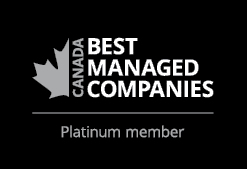Hosted by Cowan Benefits Ltd., THINK 2024 offered a valuable platform to explore the future of retirement planning, employee outcomes, and evolving regulatory guidelines. A highlight of the event was Shelly Redwood's passionate presentation, which seamlessly combined deep industry expertise, enthusiasm for employee well-being, and actionable insights for employers.
Shelly began her session by expressing her profound dedication to helping employees thrive in retirement, emphasizing the value of effective retirement planning during active employment. Her keynote was a journey through 20 years of change, comparing the world of 2004 to today’s dynamic, technology-driven environment. This context set the stage for an in-depth discussion on the revised Capital Accumulation Plan (CAP) guidelines for 2024—a framework that will shape how employers approach group retirement plans in the years ahead.
What Are the CAP Guidelines?
Shelly broke down the CAP guidelines, which were introduced in 2004 by CAPSA (Canadian Association of Pension Supervisory Authorities). CAPSA’s mission is to harmonize Canada’s pension framework, ensuring plan sponsors have a “recipe card” to manage and promote their retirement savings programs effectively. At its core, a Capital Accumulation Plan includes any tax-assisted savings program with at least two investment options, encompassing products such as registered pension plans (RPPs), group RRSPs, tax-free savings accounts (TFSAs), and the emerging first home savings accounts (FHSAs).
The revised 2024 guidelines address significant changes over the past two decades, including:
- Growth in Defined Contribution (DC) Assets – Reflecting the increasing prevalence and importance of DC plans.
- Expansion of Investment Options – Recognizing the broader range of investment choices available today.
- Digital Transformation – Acknowledging the shift toward online tools and frameworks for retirement planning.
Help your plan members save for the future.
Key Themes of the 2024 CAP Guidelines
- Intentional Plan Design. Employers are encouraged to reexamine the purpose of their retirement plans, ensuring alignment with corporate philosophy and intended employee outcomes. For instance, a plan to encourage retirement savings might incorporate withdrawal restrictions during active employment, while a TFSA designed for short-term savings might focus on liquidity. Shelly emphasized that documenting the purpose of each plan is not only a best practice but also highly encouraged under the revised guidelines.
- Automatic Features. The updated guidelines advocate for features like automatic enrolment and automatic escalation, enabling employees to start saving earlier and increase contributions over time. While these features may require existing employment and pension legislation changes, they represent a forward-thinking approach to enhancing member outcomes. Shelly highlighted how these mechanisms could simplify decision-making and promote employee financial preparedness.
- Enhanced Education and Communication. Education emerged as a cornerstone of the revised guidelines. Employers must now provide continuous support throughout the employee lifecycle—from enrollment to retirement or termination. By offering tools, resources, and personalized advice, employers can empower employees to make informed decisions. Shelly reinforced the importance of this ongoing engagement, tying it to reduced financial stress, improved workplace productivity, and stronger employee trust.
- Governance and Best Practices. Good governance is at the heart of the updated CAP guidelines. While not legislative, these guidelines serve as a benchmark for industry best practices. Employers are encouraged to develop a governance framework tailored to the size and complexity of their plans. Shelly advised plan sponsors to lean on trusted partners, like Cowan Benefits Ltd., to ensure their frameworks are robust and aligned with the latest standards.
- Investment Choices and Default Options. Striking the right balance in investment offerings is critical. Too many choices can overwhelm employees, while too few may limit their opportunities. Shelly noted the importance of aligning default investment options with intended outcomes—for instance, using conservative options for short-term savings plans and long-term growth options for retirement-focused plans. She also stressed the importance of regular reviews to ensure plan options remain relevant and valuable.
Action Items for Employers
Shelly provided a clear roadmap for employers to navigate these changes effectively:
- Reassess Plan Purpose and Design - Ensure your plan’s purpose aligns with your organization’s goals and employee needs. Document these objectives and incorporate them into your governance framework.
- Leverage Automatic Features - Although there is still work to be done, the revised guidelines allow space for employers to start thinking about how automatic features can help support employees' retirement preparedness.
- Develop a Comprehensive Education Strategy - Equip employees with tools, resources, and support throughout their journey, addressing enrolment, ongoing financial planning, and retirement readiness.
- Strengthen Governance Practices - Work with consultants to evaluate your current policies, identify gaps, and implement a governance framework that reflects the latest CAP guidelines.
- Review Investment Options - Regularly assess the number and type of investment choices offered, ensuring they align with plan goals and provide meaningful value to employees.
Looking Ahead
The revised CAP guidelines reflect an industry evolving to meet the needs of modern employees. By focusing on education, intentional design, and governance, employers can create retirement programs that truly support their workforce in achieving financial security and thriving in retirement.
Shelly concluded her presentation with a thought-provoking quote:
“Change need not be feared, but it should be carefully considered.”
For employers, this change represents an opportunity to refine their retirement strategies, foster employee trust, and ultimately contribute to better retirement outcomes. With trusted partners like Cowan Benefits Ltd., the path forward is both clear and attainable.
Video highlights from Shelly's presentation

-min.jpg?width=400&name=MFA_Blog%20(1)-min.jpg)
-min.jpg?width=400&name=AJ%20Feltis%20(1)-min.jpg)
-min.jpg?width=400&name=Healthy_Workplace_Blog%20(1)-min.jpg)

